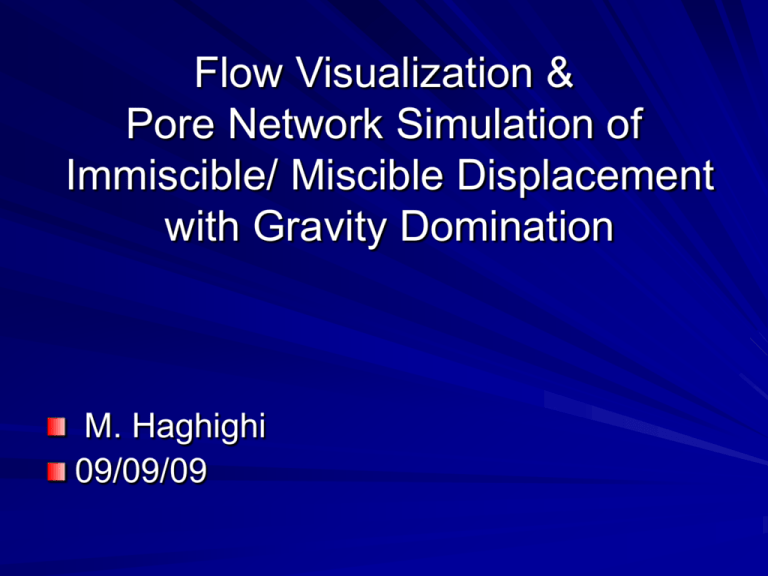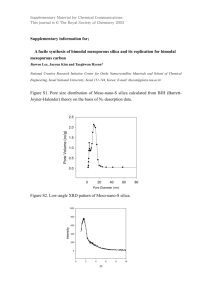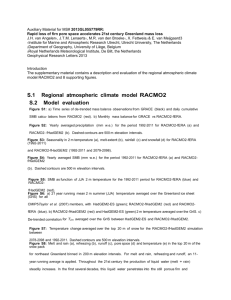SAGD - IEA-EOR
advertisement

Flow Visualization & Pore Network Simulation of Immiscible/ Miscible Displacement with Gravity Domination M. Haghighi 09/09/09 Table of Contents EOR Process with Gravity Domination Darcy Law Is Not Enough Experimental Results Modelling Results Future Work EOR Process with Gravity Drainage GAGD SAGD Downdip Gas Injection Updip Gas Injection Gas Injection In Fractured Reservoirs CO2 GAGD (Jadhawar & Sarma) SAGD Downdip Gas Injection Gravity Drainage In Fractured Reservoirs Reservoir Simulation Diffusivity Equation (Mass Balance and Darcy Equation) Relative Permeability Concept (BuckleyLeverett equation for immiscible displacement) EOR Efficiency Microscopic Displacement Efficiency × Macroscopic Displacement Efficiency Microscopic Displacement Efficiency Flow Mechanism at Pore Scale Pore Geometry Pore Structure Wettability Dispersion Diffusion Macroscopic Displacement Efficiency Areal Sweep Efficiency Vertical Sweep Efficiency Large Scale Reservoir Heterogeneities Well Pattern Darcy Law is not enough (at Pore Scale) Pore Scale Flow Mechanisms Film Flow Meniscus Movement Corner Flow Wettability Alteration Fluid Spreading Darcy Law Is Not Enough (In Pore Network) Viscous Fingering Invasion Percolation Diffusion Limited Aggregation Fractal Characteristics DLA Lenormand et al. Research Tools at Pore Scale Flow Visualization using Glass Micromodel Pore Network Simulation Glass Etched Micromodels 1) Preparing the pattern of porous media 2) Elimination of the protection-layer of the mirror 3) Covering the mirror with photo resist laminate 4) Exposing the covered mirror to UV light 5) Elimination of not-lightened parts using a developer 6) Etching the glass with HF 7) Fusing the etched glass with a plain glass Experimental Set-up Experimental Results Experimental Results Experimental Results Experimental Results Experimental Results Experimental Results Experimental Results Pore Network Modeling 1. A discrete view of the porous medium (pores and pore throats) Pores provide volume & interconnectivity Pore throats provide resistance to flow. 2. Solution to various transport problems using conservation equations. Mass conservation at each pore: Simple solution to the momentum equations in each pore throat. Qi qij 0 j throats qi , j gi, j ( Pj Pi ) Pi Pi Pc Solution of the Fluid Flow in the Network Conductances: Fluid Flow Equations Nodes with Oil-Gas Front: g a) =0.5GA , (Oil): circular cross section One2/μPhase g = 0.5623GA2/μg a,s square cross Node section oil oil , oil oil section P(i oilP g = 3R2A/20μqP triangular cross i g c ) ij G ij i j o il P o il o il gh A Pgas= Constant= Patm P2 b) Two-Phase (Oil Balance) & Gas): Eq. For Each Oily Node: Continuity (Mass At = πR2 , circular cross section oil At = 4R2 , square cross section q 0 ij ( q g ij ij 2 j At =R /4G , triangular crossisectionj Pc ) Writing Film Conductance: Continuity Eq. for all Nodes, We have a linear set of equations: 3 2 2 g A1 (1 sin ) tan 3 og gas A2 2 12Ac sin (1 3 ) c1 f1 3 (1 f 2 3 ) A c 2 [G].[ P] [ D ( P , gH , P )] Gas-Oil Displacement Generalization of Continuity Eq. for Different Fluid Configurations 4 Different Continuity Equations 34 Different Fluid Gonfigurations → 3 V Ved Nodes t.qiedAre Oily Nodes: t t Vof 1 tNode Example: If Allqing Adjacent t ed ( g ij1 g ij2 g ij3 g ij4 ) Pi g ij1 Pj1 ... g ij4 Pj4 g ij1 og ghij1 ... g ij4 og ghij4 4 q k 1 4 ijk g ijk ( ijk ) g ij1 ( Pi Pj1 og ghij1 ) ... g ij 4 ( Pi Pj 4 og ghij4 ) k 1 Example: If One of the Adjacent Nodes of Node i be Occupied by Gas: 4 q k 1 4 ijk g ijk ( ijk ) 0 k 1 ( g ij1 g ij2 g ij3 g ij4 ) Pi g ij2 Pj2 ... g ij4 Pj4 g ij1 ( Patm PCij og ghij1 ) g ij2 og ghij2 ... g ij4 og ghij4 1 j Poili Pgas PCijOg Pore Level Displacement Mechanisms 2-Phase Displacement Mechanisms a) Drainage b) Imbibition c) Counter-Current Drainage 3-Phase Displacement Mechanisms a) Double Drainage b) Double Imbibition j Poili Pgas PCij Og j Poili Pgas PCij Og POilI Pg PCIJog POilJ q g ijk oil k k ijk oil ( Poili Poilj ) 0 k Model Assumptions N cap B ( i j ) gL2 ij ≈10-6 → Viscous forces are negligible ≈ 1609 > 10-4 → Gravity forces are very important Experimental Results Future Work Micible Co2 Flooding with Gravity Domination Using Glass-etched Micromodel and Pore network Modelling Miscible Co2 Flooding with Gravity Domination Establishing Flow Visualization Lab Performing Miscible Displacement Tests Developing Pore Network Model for Miscible Displacement Identifying Controlling parameters Performing Experimental in Core Scale Performing Process Optimization Upscaling End Any Questions?






